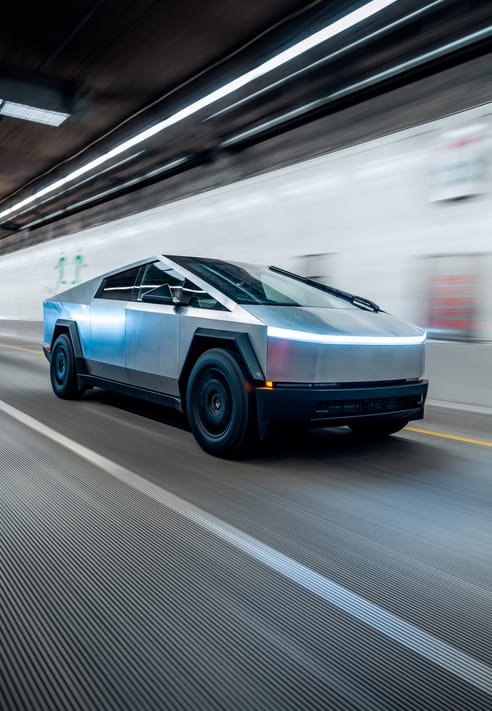Green Commutes: Electric Cars with Integrated Bike Racks and Flexible Cargo Options

The transportation landscape is undergoing a significant shift towards sustainability. Electric vehicles (EVs) are rapidly gaining traction as a cleaner alternative to traditional gas-powered cars. However, for many, the transition to EVs raises concerns about practicality, particularly for those who enjoy cycling for exercise, recreation, or short commutes. This is where a new wave of EV design comes in: electric cars with seamlessly integrated bike racks and adaptable cargo solutions.
This article explores the growing trend of electric cars catering to a multi-modal lifestyle. We'll delve into the benefits of this design approach, analyze existing car models incorporating these features, and explore the potential future directions for this exciting development in the world of EVs.
The Rise of the Multi-Modal Commuter
The ideal transportation scenario involves a combination of options that are efficient, environmentally friendly, and cater to individual needs. This is where the concept of the multi-modal commuter thrives. Imagine a world where you can drive your electric car to a designated spot on your commute, securely rack your bike, and complete the final leg of your journey with a healthy, carbon-free ride. This flexibility is particularly attractive for those who live in areas with well-developed cycling infrastructure or those who enjoy incorporating cycling into their daily routine.
Integrating bike racks and flexible cargo space into electric car designs offers numerous advantages:
- Reduced Emissions: By combining car travel with cycling for shorter distances, these vehicles contribute to a significant reduction in overall emissions. This not only benefits the environment but also promotes cleaner air in urban areas.
- Enhanced Efficiency: Utilizing an EV for longer stretches and a bicycle for shorter trips maximizes fuel efficiency. This translates to lower running costs and a lighter environmental footprint.
- Increased Convenience: Having a built-in bike rack eliminates the need for external attachments, saving time and potential frustration. Additionally, adaptable cargo space allows for secure transport of various gear, groceries, or even multiple bikes.
- Promoting Active Lifestyles: The integration of cycling into car commutes encourages a more active lifestyle, bringing numerous health benefits for individuals and contributing to a healthier society.
Existing Examples: Leading the Charge
Several car manufacturers are already embracing the concept of EV design that caters to multi-modal transportation. Let's look at a few prominent examples:
- Tesla Cybertruck: This futuristic electric truck boasts a revolutionary exoskeleton design and an extendable bed that can easily accommodate multiple bicycles.
- Rivian R1T: This electric pickup offers a unique "gear tunnel" located beneath the bed, perfect for storing bikes or other outdoor equipment. Additionally, an aftermarket roof rack system allows for additional bike carrying capacity.

- Volkswagen ID. Buzz: This electric homage to the iconic VW Microbus features a spacious interior and a variety of roof rack options, making it a versatile choice for families who enjoy cycling adventures.

These are just a few examples, and as the market for electric vehicles continues to grow, we can expect to see even more innovative designs that seamlessly integrate bike storage and cargo solutions.
Design Considerations and Future Outlook
As car manufacturers embrace the multi-modal commuter concept, several key design considerations come into play:
- Security and Ease of Use: Bike racks should be designed for secure and effortless loading and unloading of bicycles. This could involve innovative locking mechanisms, easy-to-access placements, and potentially even electric assist for lifting heavier bikes.
- Cargo Space Adaptability: Flexible cargo solutions are essential. Foldable seats, expandable compartments, and roof rack integration can cater to a variety of needs, from transporting groceries to carrying multiple bikes.
- Aerodynamics and Range: Integrating bike racks and extra storage compartments needs to be done with minimal impact on the vehicle's aerodynamic profile. This ensures optimal battery range and efficiency.
The future of electric cars with integrated bike racks and adaptable cargo space is promising. Here are some potential directions for this trend:
- Modular Design: Imagine a future where bike racks and cargo compartments become modular components, allowing drivers to customize their vehicles based on their specific needs.
- Advanced Materials: Lightweight and high-strength materials will be crucial for designing bike racks and cargo solutions that are both functional and maintain vehicle efficiency.
- Smart Integration: Integration with smartphone apps could allow for remote locking/unlocking of bike racks, monitoring cargo weight distribution, and optimizing cargo space utilization.
The growing adoption of electric cars with multi-modal features presents a significant opportunity to create a more sustainable and healthy transportation landscape. By encouraging cycling and reducing reliance solely on cars, these innovative designs contribute to a cleaner environment, promote active lifestyles, and offer a more flexible and convenient commuting experience. As technology advances and consumer demand grows, we can expect to see even more exciting developments in this area, paving the way for a greener and more multi-modal future for transportation.
